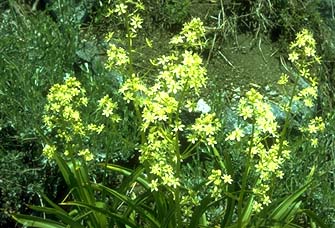
By Scott E. Cotton, M.S. CPRM, UNL Extension Educator
Drought generates increased poisoning risks for livestock due to reduced availability, timing shifts, and physiological changes in the desired forages on rangelands and pastures.
Livestock under normal conditions are fairly adept at selecting forages with safe nutritional values based on preference, learned behavior, and a function called “negative feedback” which basically is the memory that a plant generated illness, depressed condition, or discomfort when eaten. Impacts of toxic and poisonous plant consumption can be as obvious as rapid death, or as gradual as hair loss, and even as discrete as early abortions and/or failing to breed.
Drought reduces the production level and availability of desirable forages causing livestock to be more willing to consume novelty plants and/or plants that had a previous negative feedback. The need by livestock to fill their digestive system is enhanced when availability of normal forage is low. Many of the toxic or poisonous plants causing risk are already present on the landscape but not utilized by stock until desperate for dry matter. Native toxic plants are not recognized as strange by managers since they had been on-site previously and never generated a problem. Examples of this might be consumption of Poison Suckleya which greens up on the borders of drying reservoirs (acute & lethal) or consumption of Death Camas sprouting in meadows after grass has thinned out the previous fall.
Drought generates poisoning risk due to shifts in desirable plant production if livestock managers do not shift turn out dates to match production. Livestock turned out on a “hard date” basis may be forced to seek and consume alternative feeds until grass becomes available. An example of this situation is cattle moving under coniferous trees and consuming pine needles, which contain tannin, resulting in abortions. Some toxins, such as those in pine needles can be habit-forming, stimulating stock to return to the site each year, teaching additional animals the negative behavior.
Drought can cause physiological shifts that generate toxic conditions in normal plants, such as forcing plants to pull very hard for nutrients from their roots or disrupting cell structure so that a plant cannot disperse nutrients normally through its vascular system. Examples of this are drought stimulating plants to pull and accumulate excess selenium from a soil profile, or normal forage crops accumulating high levels of nitrates near the crown of the plant.
The effects of toxins vary with the plant, the livestock species, the mechanism of toxicology, and whether the action is chronic (recurring), accumulative (building up over time), acute (fast action and impact), or combinations of the methods. During drought it is crucial to pay close attention to the behavior and condition of livestock. It is also crucial to learn and recognize the toxic plants that reside normally on your landscape as well as adjust stocking rates and turn out dates to maximize productivity and minimize toxin risk.
Often toxic plant populations cannot be addressed economically with herbicides, but can often be managed with changes in management and timing of grazing.
Always be cautious when turning livestock onto pastures they are not familiar with (especially when they are hungry) since their ability to be selective is reduced for a certain period. If you notice plants you do not recognize or notice health issues, contact your veterinarian and/or Extension Educator to address the problem before it becomes wide-spread. Plant poisoning is an issue to avoid during periods when productivity is already challenged.
For more information see the NebGuide “Minimizing Plant Livestock Poisoning on Western Rangelands” at http://www.ianrpubs.unl.edu/live/g1948/build/g1948.pdf
For more UNL Beef information go to http://beef.unl.edu